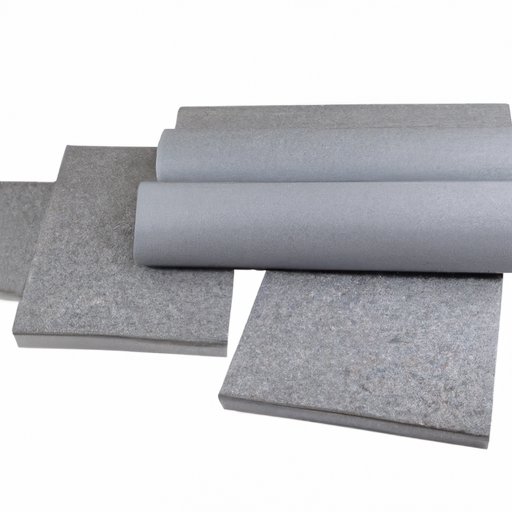
Introduction
Noises can often disrupt the peace of your room, making it hard for you to concentrate, relax, or entertain guests. The main culprit, in most cases, is a poorly soundproofed door. Soundproofing a door might seem like a huge task, but the rewards are worth it. This article offers step-by-step guidance on how to soundproof a door, ensuring that you get the peace and tranquility that you desire in your room.
Identifying the Sources of Noise
To soundproof a door, you need to first identify the sources of the noise affecting your room. These sources could be noises from outside, roommates, or even pets. Once you identify the source, it will be easier to take the necessary measures to minimize the noise. In most cases, you will find that the door is the main culprit and that sound travels easily through it.
The Importance of Sound Insulation
Sound insulation is critical in any setting where noise may be a problem. In music studios, home theaters, or even residential spaces, the proper insulation can help to minimize noise and improve the quality of sound. Insulation helps to absorb sound waves and prevent them from bouncing off walls, ceilings, or floors. Whether you are looking to create a quiet home environment or run a professional studio, proper sound insulation is essential.
Comparing Different Soundproofing Options
There are various soundproofing options at your disposal, with each one boasting different pros and cons, depending on your specific needs. Soundproofing blankets, acoustic foam panels, soundproofing curtains, and acoustic curtains offer varying degrees of soundproofing. Before selecting a suitable option, consider your budget, preferences, and the location of the room.
The Step-by-Step Process to Soundproofing a Door
Here is a step-by-step guide on how to soundproof a door:
- Identify the issues: Before soundproofing a door, identify the issues that you need to address, such as gaps in the door or uneven surfaces. These issues will inform your choice of materials.
- Select your materials: Choose the appropriate materials based on the identified issues. For example, you might need acoustic caulk to seal gaps or weatherstripping tape to cover exposed edges.
- Measure your door: Measure the dimensions of the door and buy enough material to cover the door completely. Purchase acoustic curtains, soundproofing blankets, or acoustic foam panels, depending on your choice.
- Cover the door: Install the materials on the door, ensuring that the materials fit tightly and leave no gaps.
- Install a door sweep: A door sweep helps seal the gap between the door and the floor, minimizing sound leakage.
- Test the soundproofing: Once you have installed the soundproofing materials, test the effectiveness of the soundproofing by playing music or making noise outside the door. If you still hear noise, identify the areas that require additional soundproofing.
Common Mistakes to Avoid
When soundproofing a door, some common mistakes could compromise the effectiveness of your soundproofing. One common mistake is using the wrong soundproofing materials or poor installation techniques. Always ensure that you understand the materials you need and get the right measurements before installing them.
Conclusion
Soundproofing a door is a simple process that can make a huge difference in creating a peaceful and serene environment. By following these steps and avoiding common mistakes, you can achieve your desired level of soundproofing. Remember, the key to achieving proper soundproofing is choosing the right materials, understanding the installation process, and taking measurements to ensure that the materials fit tightly. With these tips, you can enjoy the benefits of a quiet and peaceful room.




